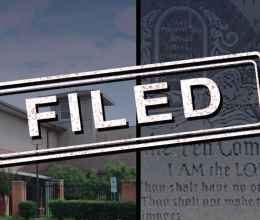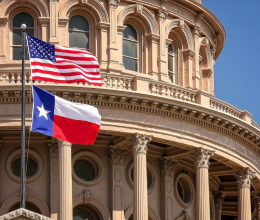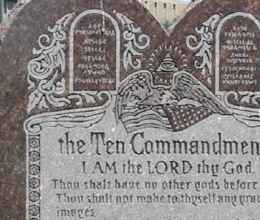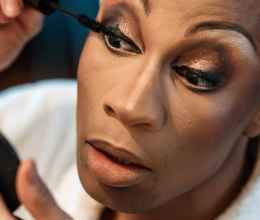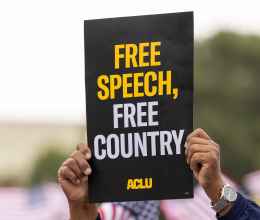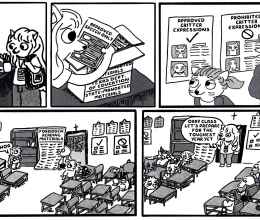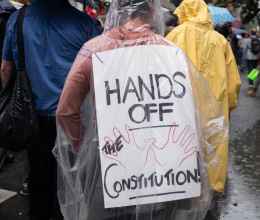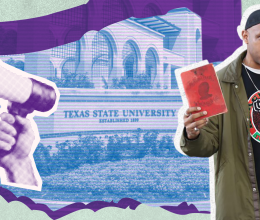
I and others have argued that video has “killed trust in police officers.” Police have been able to get away with a lot of abuse because judges, juries, and the public have usually deemed police officers more credible than abuse victims. But with a regular parade of videos being posted online, a certain naive faith in police officers held by many Americans may be eroding.
But what has often replaced that blind trust is the frame of the "bad apple" police officer. In this view of the world, the only problem that we face in law enforcement is the inevitable appearance within police ranks of an occasional individual of unusual anger and brutality.
The problem is, police problems appear to be far more systematic. There are many reports of police abuse that call into question the “bad apple” notion.
Take, for example, the Chicago Police Department and its “Gestapo” tactics at a “black site” where arrestees were, according to recent reporting by the Guardian, often held incognito and mistreated. Rather than an anomaly, the record suggests that the Chicago police have used abusive interrogation tactics for decades. From another Guardian report:
Highly decorated Chicago Police Commander Jon Burge... used the techniques he learned [in Vietnam] on black suspects in Chicago. These techniques included Russian roulette with pistols and shotguns, burning suspects on radiators, suffocation with typewriter covers, beatings with phone books and electric shocks to the ears, nose, fingers, and testicles.
Burge was a fast-rising and well-respected officer who operated with impunity; neither his colleagues nor his supervisors blew the whistle. Neither did prosecutors or officials in the Cook County State’s Attorney’s Office....
Once public pressure mounted—and only then—Burge was finally fired in 1993, accused of torturing confessions out of what is believed to be more than 100 African American men. He was not, however, without his defenders: at the time of his firing, the Chicago Fraternal Order of Police, the largest union representing officers, attempted to run a float honoring Burge in the Chicago’s St Patrick’s Day parade. And it wasn’t until 2006 that a special prosecutor was appointed to examine Burge’s record and determine if a criminal case could be brought against him.
In Ferguson, Missouri, of course, the Justice Department recently reported that police there engaged in systematic, often brutal racial discrimination in enforcement, that that enforcement was oriented towards extracting revenue out of black citizens rather than protecting public safety, and that it took place within a larger context of corrupt municipal courts. Other recent Justice Department reports in Cleveland and (as I recently wrote about) Albuquerque found patterns of unnecessary use of excessive force, including deadly force. The DOJ found that in Cleveland, the problems were “rooted in common structural deficiencies,” such as proper training, and a “failure to adequately review and investigate officers' use of force.” In Albuquerque the DOJ likewise found the problem “stems from systematic deficiencies in oversight, training, and policy.”
It is not as if the DOJ is particularly tough on police officers (see, for example, this tragic case where the department declined to prosecute).
Even in cities without problems at that level, systematic racial profiling has been found in numerous studies of policing—for example, in Minneapolis and Boston.
My interest in the police is focused on technology, but even just in the area of photographer's rights, I have encountered numerous cases where police officers' wrongdoing is supported by their departments. To take just one example, in May 2013 a Bakersfield, CA woman saw six sheriff's deputies, a sergeant, and two California Highway Patrol officers beating a man, David Sal Silva, and recorded it on her phone, as did her daughter's boyfriend, according to news reports. The man, surrounded by officers, reportedly screamed and cried for help as he was beaten, and was later pronounced dead. Detectives then showed up at her daughter's house at 3:00 AM, and prevented the daughter and her boyfriend from leaving the house for 3 hours until he handed over his phone. Detectives also later confiscated the woman's phone. In neither case did they have a warrant. Nor did they allow them to simply email the relevant file to the police, the policy that would satisfy any evidentiary claims the police have to the video. Later, there were indications that the police may have destroyed video of the incident. In April 2014 the DA declined to file charges, saying that Silva's death was an accident. (Silva's family and the witnesses have filed suits.)
The "bad apple" frame would suggest that the officer or officers leading the response in this incident were individual rogues, and that their fellow officers understood that their response was a problem. Yet there were nine law enforcement officers present. And then separately a number of detectives showed up later to seize the witnesses' cameras, which suggests a high degree of internal coordination within the police department. And the department hasn't released the video (which its creators would do, had the police not seized their phones).
Are the officers involved in these kinds of incidents bad people? In some cases, no doubt they are, but that is not a useful way of thinking about the problem. There is no question that there are some individual officers who are troubled, confrontational, and violent, or otherwise not up to the job of serving as a police officer with professionalism. At the same time, it’s clear that the problem often goes well beyond individual officers. The very fact that these problems appear to be so widespread suggests that there is something systematic rather than personal about the problem. Whatever it is that drives individual officers to engage in abuse, it clearly does not require some rare and unusual pathology. And given how common it is for officers to be protected instead of disciplined for abuse, that behavior also seems to reflect systematic problems, whether the in-group psychology behind the “blue wall of silence,” or the self-protective and sometimes evil behavior that all bureaucracies, including police departments, tend to exhibit.
When it comes to the “bad apple” frame, I suspect that there are powerful psychological forces pushing people to want to trust the police. The relative stubbornness of such trust probably has to do with the power of cognitive dissonance and the “Just World Hypothesis” (the strong need to believe that the world is a just place and that we are in control of our destiny). Rather than accepting the stressful reality that police officers, with all the power they wield over us, are capable of such abuse, we maintain a faith in their fundamental trustworthiness. If that belief cannot withstand the barrage of video-age evidence of abuse, then we revert to the “bad apple” frame as the next-most-comforting thing: there may be some people who are unlucky enough to encounter a rare bad apple police officer, we reason, but the problems are no worse than that.
Of course, the residents of Ferguson and other targeted communities may not hold any illusions about the nature of the problem. But many more privileged Americans—who tend to control law and policy—do.
And the urge to view things in those terms is inhibiting reform. As long as we see things in personal terms, Americans won’t tackle the heart of the problem. We need to demand that law enforcement officers be accountable for their actions just like all other citizens, and put in place institutional measures to make that happen, not only body cameras, but also independent oversight bodies with the power to enforce the law against officers, improved training (including in the handling of the mentally ill) and implicit bias training. It's time for a new leap forward in the evolution of our police forces and their professionalization.
